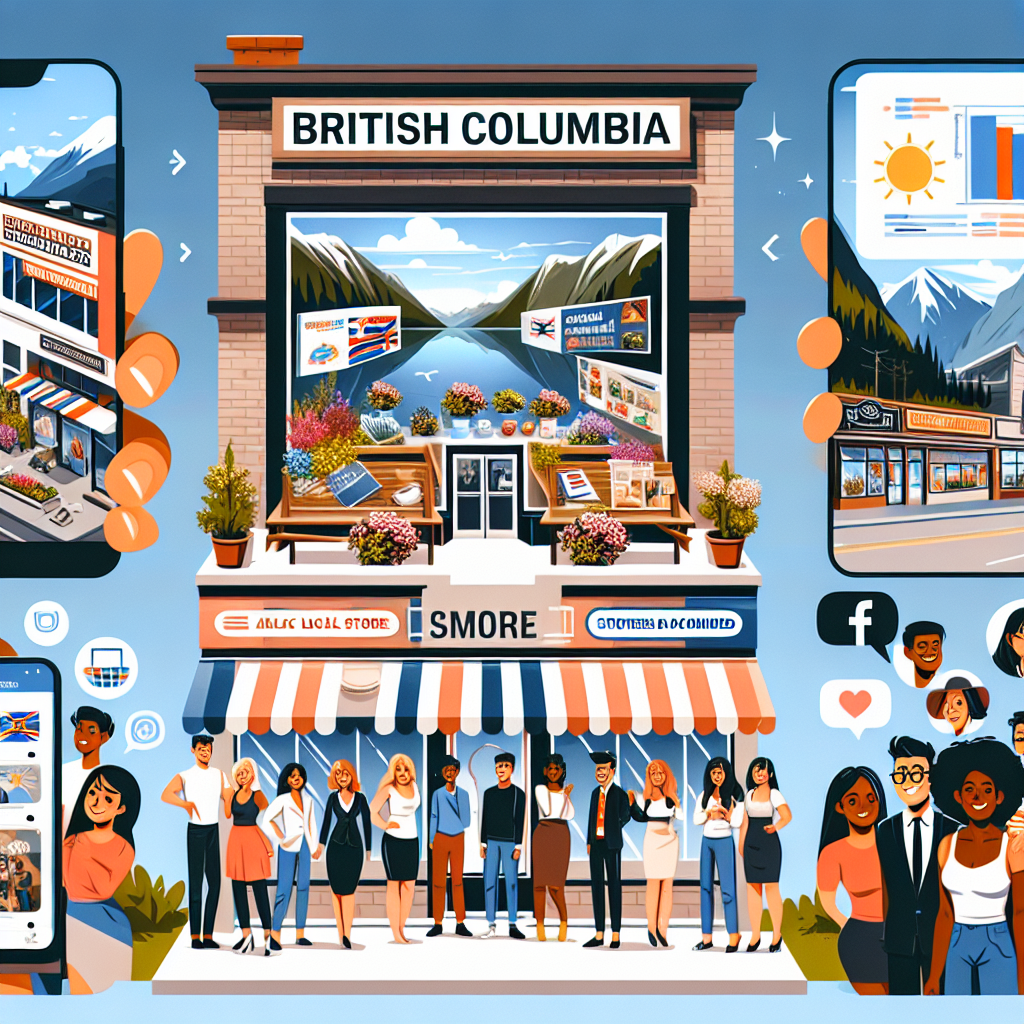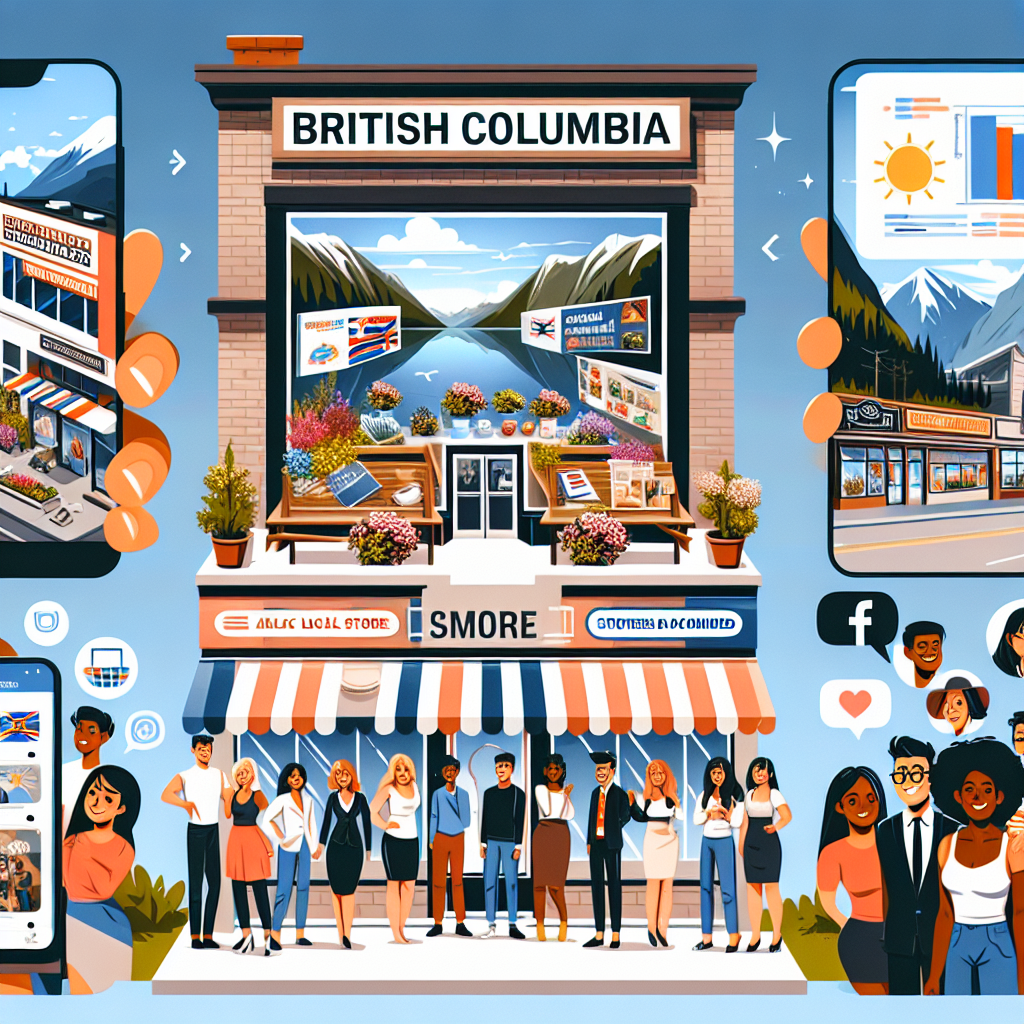You’re a small business owner in beautiful British Columbia (BC) and you’re eager to make your mark in the competitive market. You want to know the secret to effective marketing strategies that will help your business thrive in this digital age. Well, look no further! In this article, we’ll explore some tried-and-true techniques that will help you connect with your target audience, boost your brand visibility, and ultimately, drive more sales for your small business in BC. So, get ready to take your marketing game to the next level!
Know Your Target Audience

Research and Understand Your Target Audience
Before you can effectively market your small business in British Columbia (BC), it’s important to understand who your target audience is. Conduct thorough research to identify the demographics, interests, and behaviors of your potential customers. This will help you tailor your marketing strategies to reach the right people and increase the chances of converting them into loyal customers.
Create Buyer Personas
Once you have a clear understanding of your target audience, it’s time to create buyer personas. Buyer personas are fictional representations of your ideal customers. They help you understand their needs, motivations, and pain points, allowing you to create marketing campaigns that resonate with them. Consider factors such as age, gender, location, income, and preferences when developing your buyer personas. This will help you better tailor your marketing messages and strategies to attract and retain your target customers.
Develop a Unique Value Proposition
Identify Your Competitive Advantage
In a sea of competitors, it’s crucial to differentiate your business and stand out from the crowd. Identify your competitive advantage, which is what sets your business apart from others in the marketplace. Determine what unique value you provide to your customers that they can’t find elsewhere. This could be in the form of exceptional customer service, high-quality products, innovative solutions, or any other aspect that makes your business special. Highlighting your competitive advantage will help you attract customers and build a strong brand reputation.
Define Your Brand Identity
Your brand identity is what defines your business and shapes how it is perceived by customers. It encompasses your brand name, logo, colors, tagline, and overall messaging. Clearly define your brand identity and ensure it aligns with your target audience and competitive advantage. Your brand identity should convey your unique value proposition and resonate with your customers on an emotional level. Consistency in your branding across all marketing channels will help build trust and loyalty among your customers.
Build an Online Presence
Establish a Professional Website
In today’s digital era, having a professional website is essential for any small business. Your website serves as the online hub for your brand, providing information about your products or services, contact details, and other important details. Make sure your website is easy to navigate, visually appealing, and mobile-friendly. Provide valuable content that educates your visitors and showcases your expertise. Include clear calls-to-action to encourage visitors to take the desired actions, such as making a purchase or contacting you. Your website is often the first impression potential customers have of your business, so make it count.
Optimize for Search Engines
To ensure your website gets noticed by potential customers, it’s important to optimize it for search engines. Implement search engine optimization (SEO) techniques to improve your website’s visibility in search engine results. This involves optimizing your website’s content with relevant keywords, improving its loading speed, and obtaining high-quality backlinks from reputable websites. Regularly update your website with fresh and relevant content to improve its ranking and attract organic traffic. SEO is an ongoing process, so make sure to stay up to date with the latest best practices.
Leverage Social Media Platforms
Social media platforms offer immense opportunities to reach and engage your target audience. Identify the social media platforms that your target audience frequents the most and establish a presence on these platforms. Create compelling and shareable content that is tailored to each platform’s unique features and user preferences. Interact with your followers, respond to their comments and messages, and build a community around your brand. Use social media advertising to increase your reach and target specific demographics. Social media platforms also provide valuable insights and analytics, allowing you to track the effectiveness of your marketing efforts and make data-driven decisions.
Implement Content Marketing
Create Engaging and Relevant Content
Content marketing involves creating and distributing valuable and relevant content to attract and retain a clearly defined audience. Develop a content marketing strategy that aligns with your target audience and brand identity. Create blog posts, articles, videos, infographics, and other forms of content that provide value to your audience. Your content should educate, entertain, or solve a problem for your readers, positioning your business as a trusted source of information. Consider incorporating storytelling techniques to make your content more engaging and memorable. Consistent and high-quality content will not only drive traffic to your website but also establish your brand as an industry authority.
Use Blogging to Educate and Inform Readers
Blogging is a powerful tool for small businesses to educate and inform their target audience. Start a blog on your website and regularly publish insightful and informative articles related to your industry. Use your blog posts to address common pain points, answer frequently asked questions, and provide solutions to problems your target audience may face. Optimize your blog posts for search engines by incorporating relevant keywords and promoting your articles through social media and email marketing. By consistently providing valuable content, you can build trust and credibility with your audience and position yourself as an industry thought leader.
Utilize Email Marketing
Build an Email List
Email marketing remains one of the most effective ways to reach your target audience. Start by building an email list of individuals who have expressed interest in your business, either by subscribing to your newsletter or making a purchase. Encourage website visitors to subscribe by offering exclusive content or discounts. Use social media and other digital platforms to promote your email newsletter and capture leads. Growing and nurturing your email list is an ongoing process, so always be on the lookout for opportunities to expand your reach.
Segment Your Subscribers
Once you have an email list, segment your subscribers based on their demographics, interests, and purchasing behavior. This allows you to personalize your email marketing campaigns and send targeted messages to specific segments of your audience. For example, you can send a different email to first-time buyers than to loyal customers. Segmenting your subscribers ensures that you are delivering relevant and tailored content that resonates with each individual, increasing the likelihood of engagement and conversions.
Craft Compelling Emails
To make your email marketing campaigns successful, craft compelling emails that grab your subscribers’ attention and drive them to take action. Use personalized subject lines to increase open rates and write concise, engaging, and informative email content. Incorporate eye-catching visuals, such as images or videos, to make your emails visually appealing. Include clear and prominent calls-to-action that direct subscribers to your website, landing page, or product page. Test different email formats, subject lines, and content to determine what resonates best with your audience, and always analyze your email performance to optimize future campaigns.
Leverage Influencer Marketing
Identify Relevant Influencers
Influencer marketing involves partnering with individuals who have a significant online following, such as bloggers, social media influencers, or industry experts. Identify relevant influencers in your industry who align with your brand values and target audience. Look for influencers who have an engaged and loyal following, as they are more likely to have a genuine impact on their audience’s purchasing decisions. Vet potential influencers carefully to ensure their values and content align with your brand.
Build Relationships with Influencers
Once you have identified potential influencers, start building relationships with them. Engage with their content, comment on their posts, and share their content with your own followers. This will help establish rapport and show your genuine interest in their work. Reach out to influencers with personalized messages explaining why you admire their content and how your partnership could be mutually beneficial. Building strong relationships with influencers is crucial to ensure a successful collaboration.

Collaborate on Sponsored Content
When collaborating with influencers, consider partnering on sponsored content. This can take the form of sponsored blog posts, social media mentions, product reviews, or giveaways. Work with influencers to create authentic and engaging content that showcases your products or services. Encourage influencers to share their genuine opinions and experiences to maintain their credibility with their audience. Sponsored content can greatly increase brand visibility and reach, exposing your business to a wider audience and potentially driving new customers.
Offer Promotions and Discounts
Create Enticing Promotions
Promotions and discounts are a great way to attract new customers and incentivize repeat purchases. Create enticing promotions, such as limited-time offers, percentage discounts, free shipping, or buy-one-get-one deals. Promote your offers through various marketing channels, such as your website, social media platforms, email newsletters, and local advertisements. Clearly communicate the value of your promotions and emphasize the benefits customers will receive by taking advantage of them. Remember to set clear start and end dates for your promotions to create a sense of urgency.
Implement Referral Programs
Referral programs can leverage your existing customer base to attract new customers. Encourage your satisfied customers to refer their friends and family to your business by offering incentives, such as discounts, freebies, or exclusive rewards. Make it easy for customers to refer others by providing them with personalized referral codes or links. Track and reward successful referrals to motivate your customers to continue promoting your business. Referral programs not only generate new leads but also help foster customer loyalty and increase customer retention.
Engage in Local Partnerships
Collaborate with Complementary Businesses
Partnering with other local businesses that complement your offerings can be mutually beneficial. Identify businesses in your community that cater to a similar target audience but offer different products or services. For example, if you own a bakery, consider collaborating with a local coffee shop to create joint promotions or cross-promote each other’s products. By leveraging each other’s customer base, you can increase brand exposure and tap into a wider network of potential customers.
Sponsor Local Events or Charities
Sponsoring local events or charities is an effective way to demonstrate your commitment to the community and gain positive exposure for your business. Align your sponsorship efforts with causes or events that resonate with your brand values and target audience. Whether it’s sponsoring a local sports team, donating to charitable organizations, or participating in community events, your involvement will help build goodwill and create a positive reputation for your business. Local sponsorships can also provide valuable networking opportunities and allow you to engage with potential customers face-to-face.
Utilize Online Advertising
Paid Search Advertising
Paid search advertising, commonly known as pay-per-click (PPC) advertising, allows you to bid on keywords and display your ads in search engine results. Create targeted ads that appear when users search for specific keywords related to your business. Set a budget and pay only when someone clicks on your ad. PPC advertising can help generate immediate visibility and traffic to your website, especially for specific keywords that are highly relevant to your business. Monitor your campaigns closely, adjust your keyword bids, and refine your ad copy to optimize your return on investment.
Display Advertising
Display advertising involves placing visual banner ads on websites, mobile apps, or social media platforms. Create eye-catching and compelling banner ads that grab the attention of your target audience. Display ads can be targeted based on demographics, interests, or browsing behavior, allowing you to reach the right people at the right time. Consider using remarketing techniques to retarget users who have previously visited your website but haven’t taken any desired action. Display advertising can increase brand visibility and drive traffic to your website, ultimately boosting conversions.
Social Media Advertising
Social media advertising offers a powerful way to reach and engage your target audience on platforms such as Facebook, Instagram, Twitter, and LinkedIn. Develop targeted ad campaigns that align with your goals and target specific demographics. Use tools provided by social media platforms to define your audience based on factors such as age, location, interests, and purchasing behavior. Create visually appealing ads with compelling copy that encourages users to take action. Monitor your ad performance, make data-driven adjustments, and leverage analytics to continually improve your social media advertising efforts.
Monitor and Analyze Results
Set Measurable Goals
To ensure the success of your marketing strategies, it’s important to set measurable goals. This allows you to track your progress and make adjustments as needed. Set specific, achievable, and time-bound goals for each marketing tactic you implement. For example, you may want to increase website traffic by a certain percentage, achieve a specific conversion rate, or generate a certain number of leads. Regularly assess your performance against these goals and adjust your strategies accordingly.
Use Analytics Tools
Analytics tools provide valuable insights into the effectiveness of your marketing efforts. Use tools such as Google Analytics and social media analytics to track key metrics, including website traffic, conversion rates, engagement levels, and customer behavior. Analyze this data to understand what is working and what needs improvement. Identify trends, patterns, and opportunities for optimization. By utilizing analytics tools, you can make data-driven decisions and focus your efforts on the marketing channels and tactics that yield the best results.
Adjust and Improve Strategies
Marketing is an ongoing process that requires constant evaluation and adaptation. Based on the insights gathered from your analytics tools, adjust and improve your marketing strategies and tactics. Experiment with different approaches, test new ideas, and refine your campaigns based on the feedback received. Continuously monitor the performance of your marketing efforts and be prepared to evolve as consumer preferences and market dynamics change. By staying flexible and responsive, you can ensure your marketing strategies remain effective and impactful over time.
In conclusion, effective marketing strategies for small businesses in BC involve knowing your target audience, developing a unique value proposition, building an online presence, implementing content marketing, utilizing email marketing, leveraging influencer marketing, offering promotions and discounts, engaging in local partnerships, utilizing online advertising, and monitoring and analyzing results. By following these strategies, you can increase brand awareness, attract new customers, and drive business growth in British Columbia.

